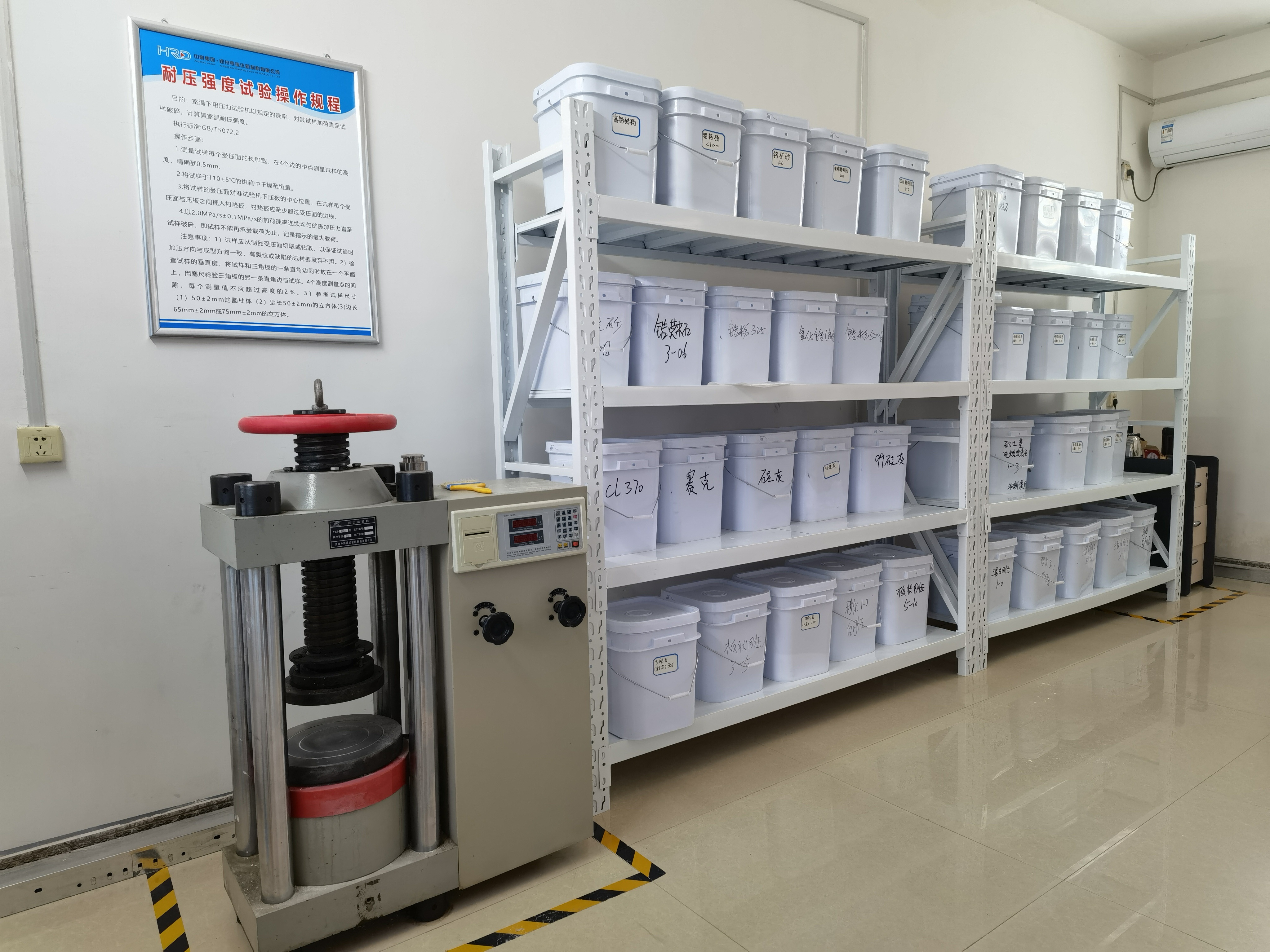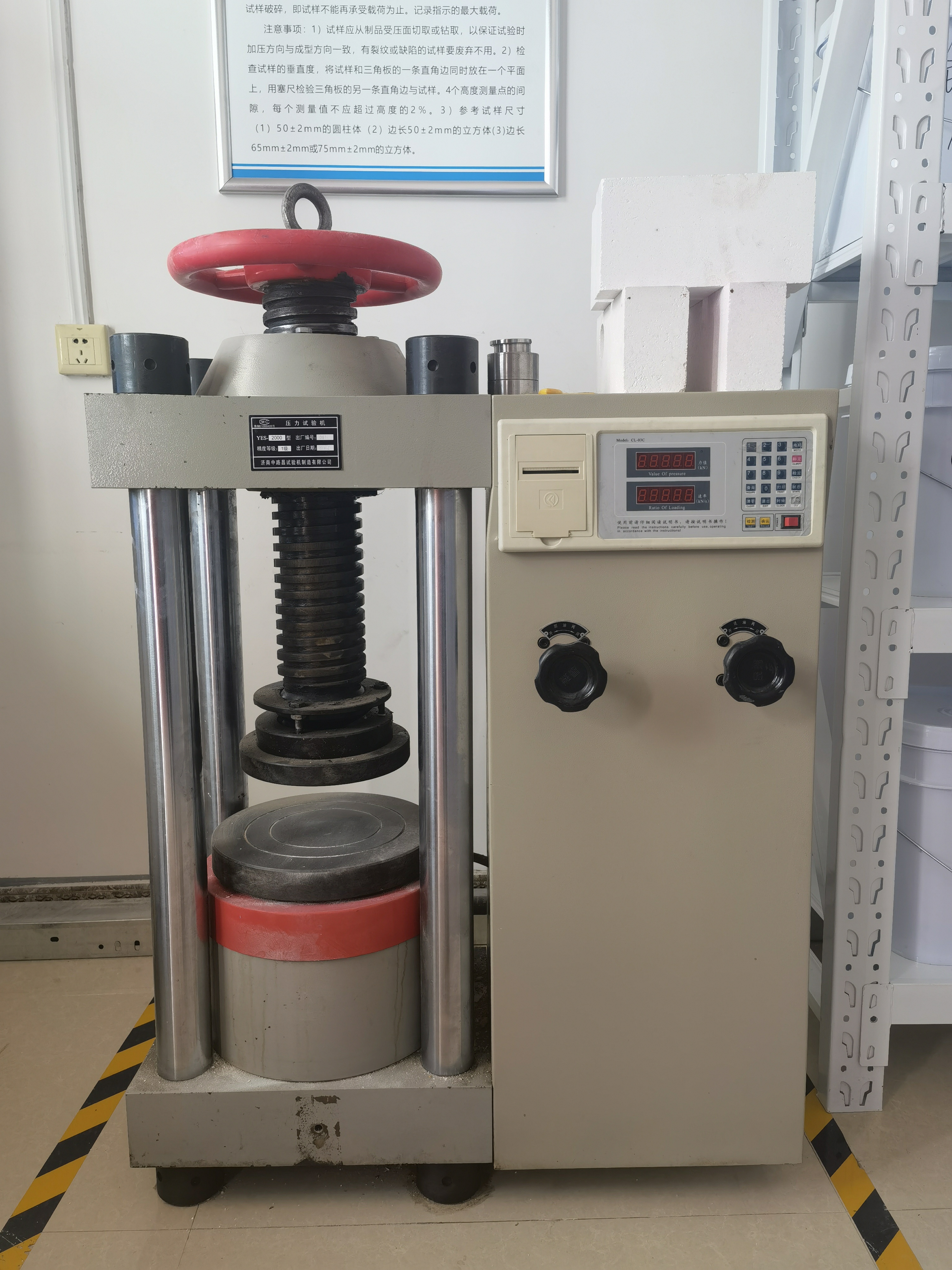Compressive Strength Test
Operating Procedures for Compressive Strength Test
Objective: To calculate the compressive strength of the sample at room temperature by loading it with the pressure tester at the specified rate until the sample is broken.
Operating steps:
1. To measure the length and width of each compression surface of the sample, and to measure the height of the sample at the midpoint of the four sides, accurate to 0.5mm.
2. To dry the sample in an oven at 110±5℃ to a constant amount.
3. To align the compression surface of the sample with the center of the lower compression plate of the testing machine, and to insert a liner plate between each compression surface of the sample and the compression plate. The liner plate shall at least exceed the edge line of the compression surface.
4. To apply pressure continuously and uniformly at a loading rate of 2.0MPa/s±0.1MPa/s until the sample is broken, that is, the sample can no longer bear the load. To record the indicated maximum load.
Note: 1) The sample shall be cut or drilled from the compression surface of the product to ensure that the pressurization direction is consistent with the molding direction during the test, and the sample with cracks or defects shall be discarded. 2) To check the perpendicularity of the sample, to put the sample and one right-angle side of the triangle on a plane at the same time, and to check the other right-angle side of the triangle and the sample with the feeler gauge. To measure the gap of points at four heights, each measured value shall not exceed 2% of the height. 3) Size of reference samples (1) Cylinder of 50±2mm (2) Cube with the side length of 50±2mm (3) Cube with the side length of 65mm±2mm or 75mm±2mm.
Previous page
Next page




